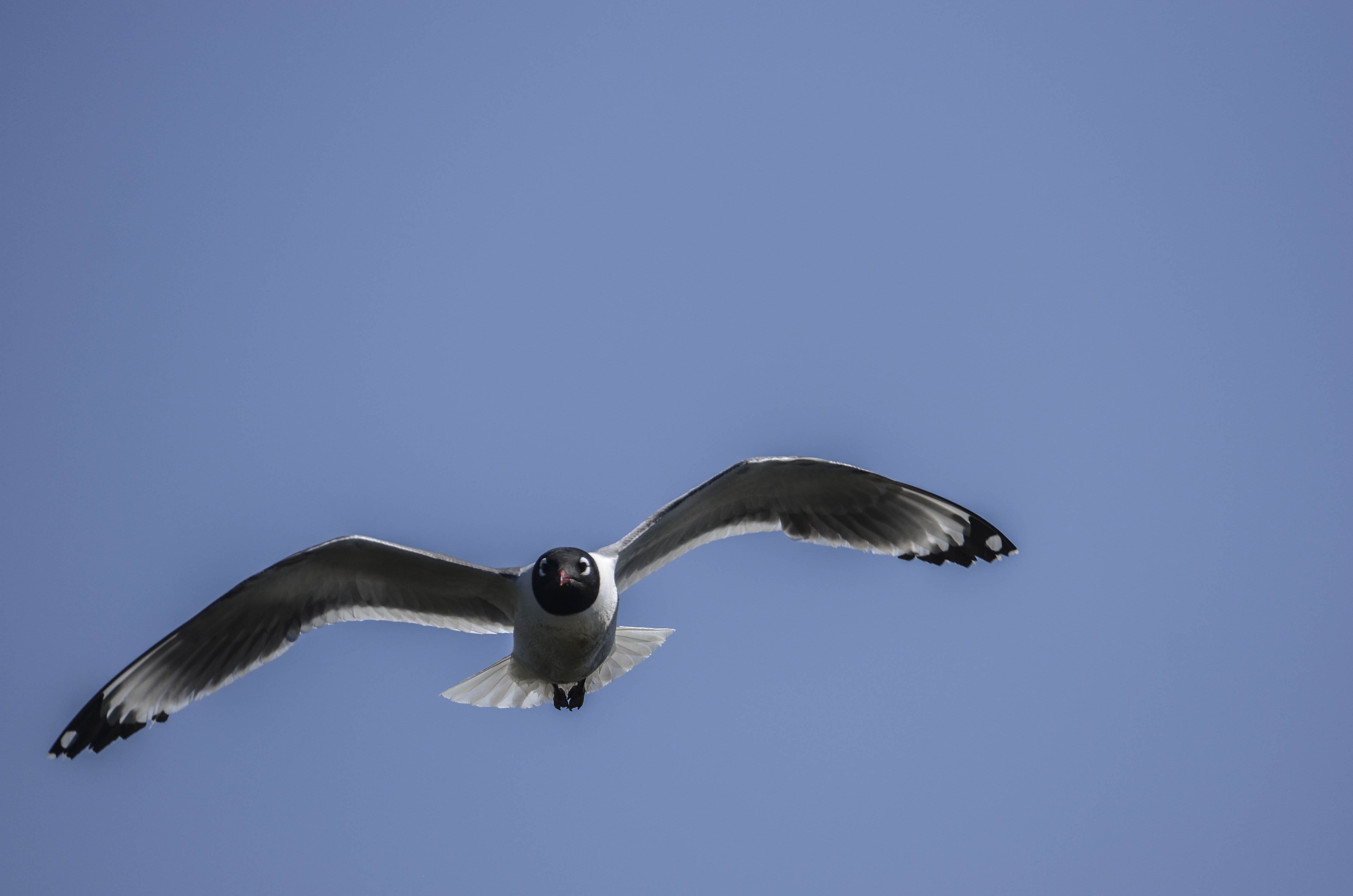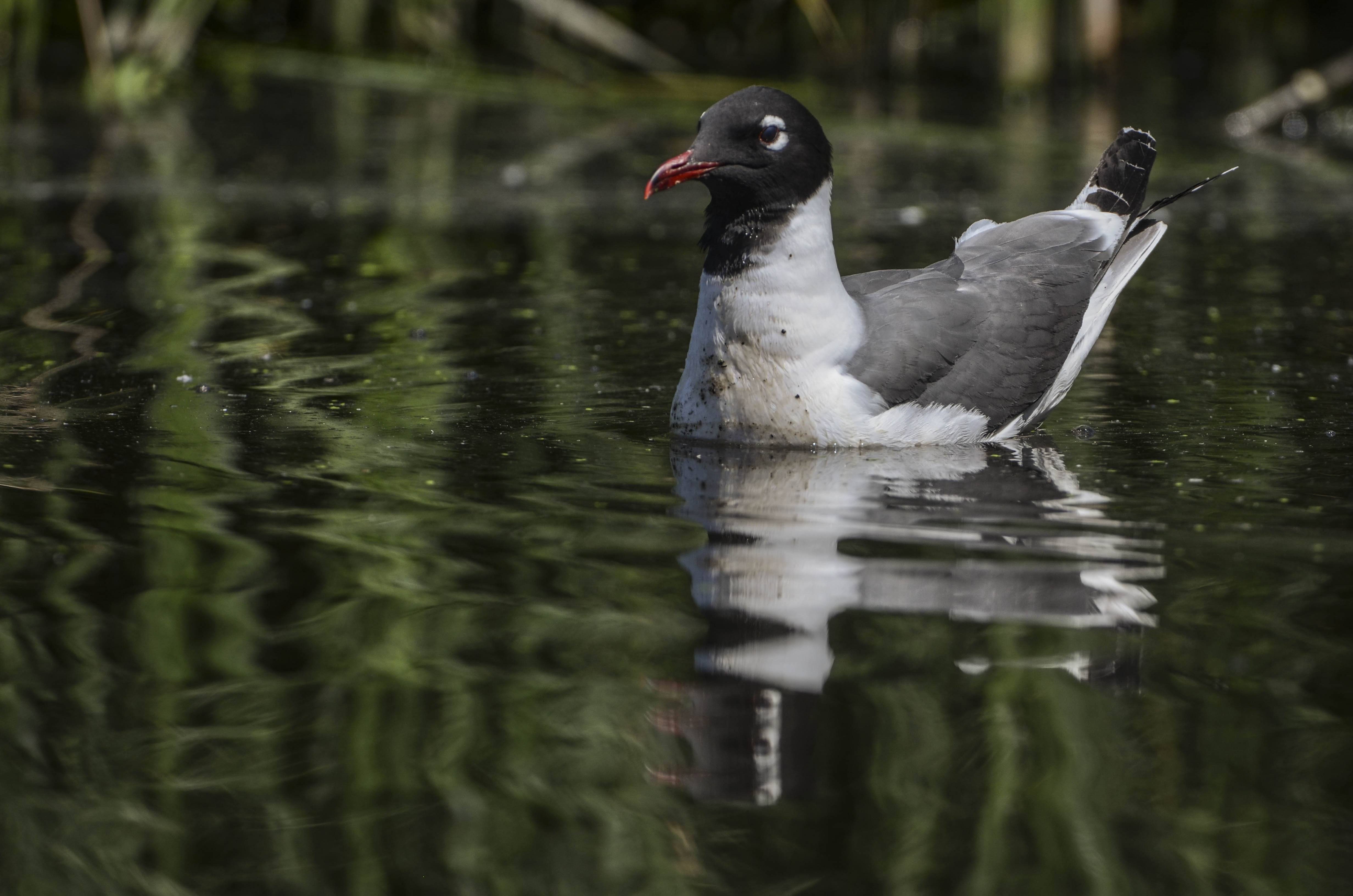
Franklin's Gull
Leucophaeus pipixcan
General description:
Gulls can be notoriously difficult to identify to species. This is especially true for birds of the year and juvenile birds. Even many of the adults of various species can be hard to distinguish especially when breeding season is past.
That is less the case with the adult Franklin’s gull. This bird is small for a gull, and the most noticeable feature is a black “hangman’s” hood with large white crescents above and below the eye. The wing is gray on top and with the exception of the very tips which are black, completely white underneath. The bill is straight and dark red in color. Legs are also a dark reddish color. This description is enough to separate it from any other gull that routinely uses Camas National Wildlife Refuge after migration.
For non-breeding adults and juvenile birds, consult a field guide for definitive identification but watch for a faded black hood.
Behavior and Habitat
Franklin’s gulls are very social birds and nest in loose colonies that may number in the thousands. You can readily hear a colony of Franklin’s gulls for quite a distance. They build a platform nest over water and raise between one and four chicks. These chicks are considered semi-precocial—they can stand within a day but usually stay with the nest for several weeks.
Like most gulls, Franklin’s gulls are scavengers and predators. They are commonly seen following behind tractors operating in agricultural fields dining on the mice, worms and insects that the farming operation unveils. They will pick through trash for tasty morsels and also forage in water and on land, eating almost anything living.
Similar Species
There are several similar species, the Laughing gull chief among them. This slightly larger bird has the hood, eye crescents and even the red bill of the Franklin’s gull. However, the tips of the underside of the laughing gull’s wings have more extensive black. Also, when wings are folded back, the Franklin’s gull has white spots visible at the tips where the laughing gulls’ are solid black. However, the laughing gull is a coastal gull, and to find one here would be quite unusual.
Bonaparte’s gull is another contender, and may potentially be seen here during migration, but it has a black bill, not a red one.

Cool Facts
The Franklin’s gull is unique among gulls in that it goes through two complete molts each year.
Franklin’s gulls are not exceptionally long-lived birds. The oldest on record was nine years old.
When and where found at Camas NWR
Watch for Franklin’s gulls on the marshes of Camas NWR from spring to fall. You can readily hear the colonies and observe birds flying in and out. On and off the Refuge, look for Franklin’s gulls around any active farming operation.
Conservation
“Franklin's Gull populations declined throughout their range by almost 3% per year between 1966 and 2015, resulting in a cumulative decline of 78% according to the North American Breeding Bird Survey. In the U.S., declines were over 6% per year during that same period, which amounts to a 96% decline. The North American Waterbird Conservation Plan estimates between 315,608-990,864 continental breeding birds and lists it as a Species of Moderate Concern. The species rates an 11 out of 20 on the Continental Concern Score. Franklin's Gull is listed as Common Bird in Steep Decline on the 2014 State of the Birds Report, but is not on the 2016 State of North America's Birds Watch List. These birds depend on extensive prairie marshes for breeding, and entire colonies may shift sites from year to year depending on water levels. Once threatened by habitat loss due to large-scale drainage projects and the Dust Bowl years of the 1930s, this species has regained numbers with the creation of large wetlands, mainly on protected national wildlife refuges. Colony shifts continue to occur, however, influenced by drought and fluctuating water levels.”
https:// www.allaboutbirds.org/guide/Franklins_Gull/lifehistory
Text by Terry Thomas. Source: https://www.allaboutbirds.org
Photos by Terry Thomas